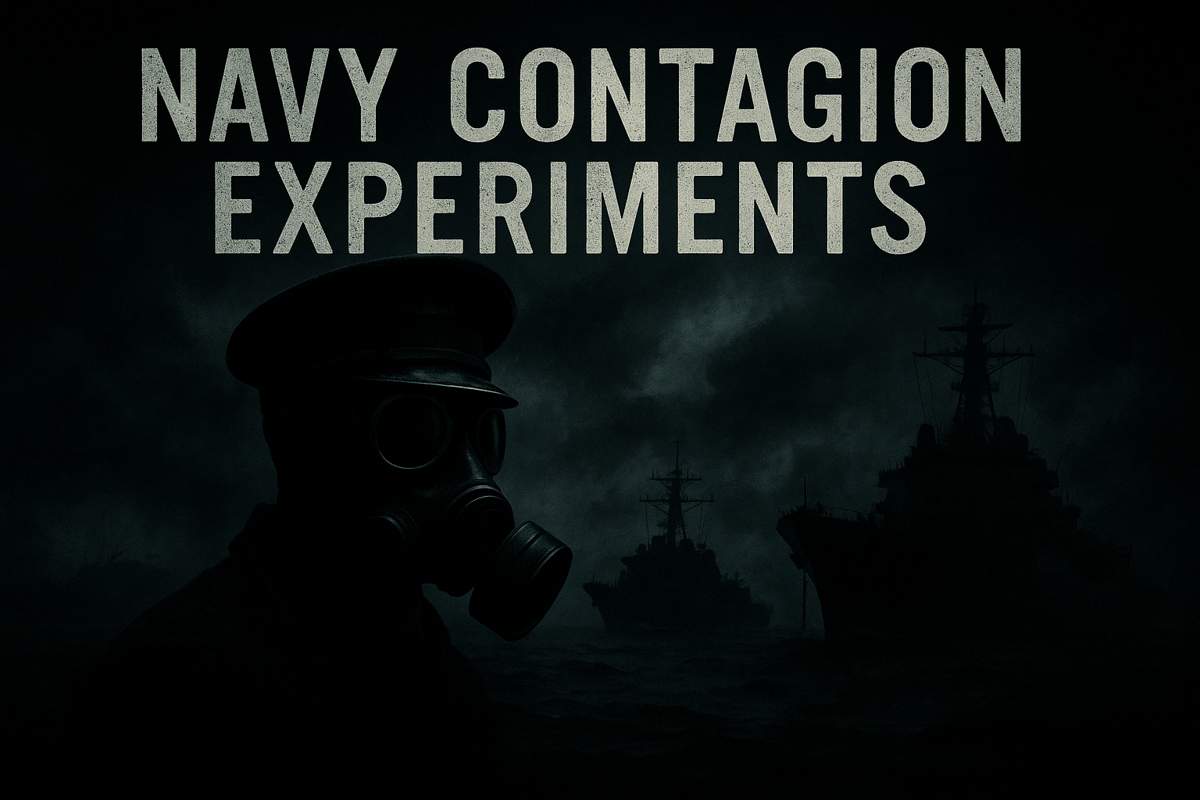For centuries, governments and militaries have been obsessed with the idea of “contagion.” The theory holds that invisible microbes jump from person to person to cause illness. But when we examine the actual experiments carried out by the Royal Navy and the U.S. Navy, a very different picture emerges: repeated failures to prove contagion. These military records are some of the strongest evidence that disease arises from conditions within the body—not from mythical invaders passed between people.
The Royal Navy’s Experiments
Cerebrospinal Fever (Meningitis) in WWI
During the First World War, outbreaks of meningitis aboard Royal Navy training ships led to strict isolation measures. Recruits were screened, “carriers” were quarantined, and serum therapies were tried. Yet, despite intensive attempts, the medical staff could not produce predictable person-to-person spread. Instead, cases often appeared sporadically, without direct contact, and disappeared when living conditions improved.
👉 Interpretation: The disease manifested when recruits were confined in cramped, poorly ventilated environments, not because of transmission between individuals.
Read more about meningitis and Navy experiments (external).
Internal link suggestion: “Natural Hygiene and the Myth of Contagion.”
Porton Down Biological Trials
In the 1950s, the Royal Navy, in partnership with Porton Down scientists, carried out Operation Cauldron. Pathogens were sprayed near naval vessels to see if animals would fall ill. Results were inconsistent: many exposed animals remained healthy, while others developed symptoms only under extreme dosing or stress.
👉 Interpretation: Even when deliberately attempting to “infect” animals with concentrated germs, illness did not reliably follow. Health outcomes depended on the internal state of the organism, not the supposed invader.
Operation Cauldron overview (external).
The U.S. Navy’s Experiments
Operation Sea-Spray (San Francisco, 1950)
The U.S. Navy sprayed the city of San Francisco with Serratia marcescens and Bacillus globigii to test how bacteria might disperse in a “bioweapon” scenario. Despite citywide exposure of nearly a million people, there was no epidemic. Only a single hospitalised case was even speculatively linked.
👉 Interpretation: If “germs cause disease,” why didn’t hundreds of thousands of civilians fall sick? The overwhelming majority remained unaffected—proof that exposure alone does not equal illness.
Operation Sea-Spray details.
Project SHAD / Project 112 (1960s–70s)
The Navy exposed ships, equipment, and thousands of servicemen to bacteria and chemical simulants. Again, trials consistently failed to produce mass sickness. Many participants only reported vague complaints years later, largely attributable to toxic chemical exposure—not bacterial “infection.”
👉 Interpretation: Despite intentional large-scale spraying of microbes, there was no wave of contagious disease. This undermines the very foundation of germ theory.
Project SHAD background.
What These Experiments Really Show
Both navies spent decades trying to weaponise microbes. If germs automatically caused disease, these efforts should have produced clear, catastrophic epidemics. Instead, the results were patchy, inconsistent, and often embarrassing for military scientists.
From a Natural Hygiene perspective, this aligns perfectly:
- Illness arises when the body is overloaded with toxins, stress, and poor conditions.
- “Germs” are at best scavengers, feeding on waste material, not causes of disease.
- Attempts to prove contagion repeatedly failed, even under extreme military testing.
Further Reading
- External:
- Internal :
Conclusion
The historical record of both the Royal Navy and the U.S. Navy reveals not proof of contagion—but proof of its failure. The grand military experiments designed to unleash plagues on ships and cities ended up demonstrating the opposite: disease is not contagious. Health and sickness are determined by the body’s internal balance, not by invisible enemies passed from one to another.


